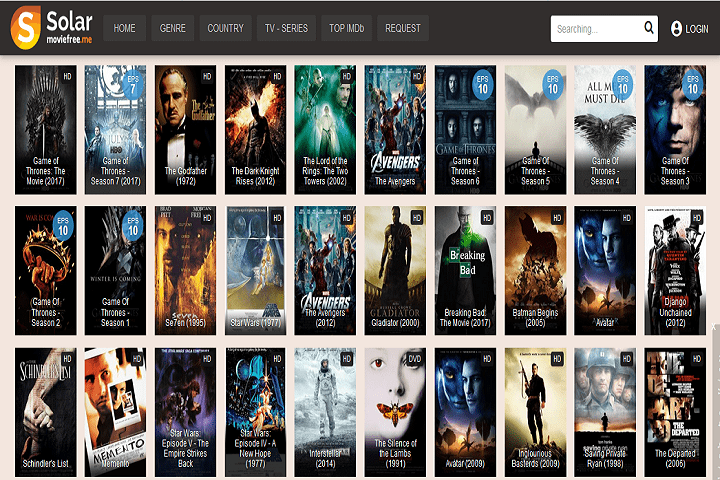Marketing
4 Dos And Don’ts Of Running A Marketing Campaign
Note that marketing strategies are expensive to execute. The last thing you want to do is spend money on a failing campaign. In light of this, here are tried and tested dos and don’ts of running a marketing campaign:

Most businesses rely on marketing campaigns for growth. A successful marketing campaign can lead to increased sales or expanded markets. As such, it’s ideal to rethink your marketing strategy to ensure you’re on the right course.
Note that marketing strategies are expensive to execute. The last thing you want to do is spend money on a failing campaign. In light of this, here are tried and tested dos and don’ts of running a marketing campaign:
Table of Contents
The Dos
The success of your marketing campaign depends on several factors. Here’s a list of things you should do:
1. Choose The Right Marketing Channel
A marketing channel determines the success of your campaign. Budget and audience preferences can help you decide on the best marketing channel. One vital goal of marketing is to popularize your products and services.
Marketing channels can help you understand where your customers hang out and the best ways to engage them. Some marketing channels you should explore include:
- Social media
- Email marketing
- Blogs
- Paid advertising
- Influencer marketing
Choosing the right marketing channel is an excellent approach if you’re wondering how to increase visibility for your business. You’ll know where to focus your efforts and how to maximize them. This way, your business can be seen by every potential customer.
2. Identify Your Target Audience
Defining your marketing audience is critical in running your campaign. Once you establish your audience, you can choose the best marketing strategy. For instance, you’ll need to create awareness if it’s a new product. Otherwise, new products might not do well in new markets before marketing and advertising.
On the other hand, your marketing campaign should be informative if you intend to reach new markets. Sending brand representatives to such markets should suffice. You should take new products to existing customers for insights on what to improve or feedback.
3. Make Your Marketing Strategies Mobile-Friendly
A lot of customers spend most of their time on their mobile devices. You need to use mobile-optimized marketing campaigns to reach several of them. Hop on emerging trends, such as using social media to run your campaigns. Your next viewer could be your new customer.
4. Measure The Progress
There’s one way to tell the success of your marketing campaigns: by measuring the results. Ensure you take some time to evaluate how much a marketing campaign has contributed to the business.
For instance, if you notice several new client signings, you can rest assured the strategy is working. You can always re-strategize the campaign if you don’t see any changes or improvements.

The Don’ts
During your marketing campaign, it’s best to avoid the following:
1. Failing To Study Your Market
Studying the market is a great business call. Your products could be the best, but you won’t realize any profits if you don’t fulfill market demands. Before launching your marketing campaign, familiarize yourself with the following pointers:
- Consumer behavior
- Buying patterns
- Income levels
- Culture
Such factors influence several aspects—for instance, pricing mechanisms. If you overprice your products, it doesn’t matter how much marketing you do; you might not convince your audience to buy them.
Thus, it’s essential to study market patterns, such as income levels, to produce products that will likely be purchased if you make them available.
2. Ignoring Competitors
There’s no doubt no one wants to deal with the hassle of competitors. However, it’ll be of no good if your business remains the best-kept secret. The last thing you should do is ignore the competition.
Remember, consumers like to compare products. Thus, there’s a need to give them options. Instead of viewing your competitors as threats, ensure you outsmart them by producing quality products and earning customer loyalty.
3. Expecting Results Immediately
The success of a marketing campaign takes time and effort. One marketing principle is that customers need to hear about your products seven times before they can purchase.
Imagine, for instance, if you take the advertisement route for your marketing campaign. In the real world, the probability of your advert appearing on television when your customers think about a product in your line is low.
On the flip side, your advert should grab their attention. The message should be precise and exciting. If the advert airs again the following day, they might remember the product’s name. The next day, they might learn about its use and ingredients.
Such is the journey of advertising, which is no different from marketing campaigns. So, be patient with your strategy. The best you can do is to reach as many customers as possible.
4. Relying On Product-Led Growth
One common mistake you should avoid at all costs is relying on product growth. You might have captured a thousand new prospects from your recent campaign. But what matters most is whether you’ll be able to retain them. You’ll need to put extra effort into retaining customers.
There are several ways you can use to revamp a product. It’s a surefire way of keeping your customers hooked to your products. For instance, if you’re selling hair products, upgrading them occasionally would be best. Perhaps develop a product with extra essential oils.
You can improve hair food by adding menthol or coconut oil, which is suitable for maintaining a healthy scalp. Your customers will feel the need to try the other products. Such a strategy keeps them longer in your business.
Conclusion
Running a marketing campaign is not a walk in the park. However, it shouldn’t be daunting if you follow some marketing frameworks. Execute the do’s stated above and avoid the don’ts, and you can be sure to run a successful marketing campaign for your business.
Business
Navigating the Process of Selling Deceased Estate Shares
This article aims to provide a comprehensive guide to selling shares from a deceased estate. Process of Selling Deceased Estate Shares.

Table of Contents
1. Understanding the Basics of Selling Deceased Estate Shares
Dealing with a deceased estate can be a challenging and emotional process, especially when it comes to handling financial assets like shares. This article aims to provide a comprehensive guide to selling shares from a deceased estate.
2. What are Deceased Estate Shares?
Deceased estate shares refer to the stocks and shares that were owned by an individual who has passed away. These shares become part of the deceased’s estate and are subject to the terms of their will or estate plan.
3. The Importance of Valuing the Shares
The first step in selling deceased estate shares is to obtain a current valuation. This valuation is crucial for several reasons: it helps in distributing the estate among beneficiaries, it may be necessary for tax purposes, and it gives an idea of the market value of the shares.
4. Legal Requirements and Executor Responsibilities
The executor of the estate plays a pivotal role in the management and distribution of the deceased’s assets. This section will cover the legal responsibilities and steps the executor needs to take to lawfully sell the shares.
5. Obtaining Probate
Before any action can be taken with the shares, it’s often necessary to obtain probate. Probate is a legal process that confirms the executor’s authority to deal with the deceased’s assets.
Transferring Shares into the Executor’s Name
Once probate is granted, shares may need to be transferred into the name of the executor. This process varies depending on the company and the type of shares.
6. The Process of Selling Shares
After completing legal formalities, the executor can proceed with selling the shares. This section will outline the steps involved in this process, including choosing a brokerage or financial service, understanding market conditions, and making informed decisions.
Deciding on the Right Time to Sell
Timing can significantly impact the returns from selling shares. Executors need to consider market conditions and financial advice to determine the best time to sell.
Completing the Sale
This subsection will detail the actual process of selling shares, including placing orders, handling transaction fees, and ensuring all regulatory requirements are met.

7. Navigating Tax Implications and Reporting
Managing tax obligations is a critical aspect of selling deceased estate shares. This section will explain the potential tax implications and the importance of accurate reporting for both capital gains tax and inheritance tax considerations.
Understanding Capital Gains Tax Responsibilities
When shares are sold, any profit made from the time of the deceased’s passing to the sale date may be subject to capital gains tax. Executors need to be aware of these implications and plan accordingly.
Inheritance Tax Considerations
In some jurisdictions, the value of the deceased estate’s shares might impact inheritance tax calculations. It’s essential for executors to understand these aspects in order to ensure compliance with tax laws.
8. Common Challenges and How to Overcome Them
Selling deceased estate shares can present unique challenges. This section will discuss common issues such as disputed wills, fragmented information about the shares, and market volatility.
Dealing with Disputed Wills and Beneficiary Disagreements
Disputes over the will or disagreements among beneficiaries can complicate the process. Executors must handle these situations delicately and legally.
Managing Market Volatility
Shares can be subject to market fluctuations. Executors should be prepared for this volatility and may need to consult financial advisors to navigate these waters effectively.
9. Tips for Executors Handling Deceased Estate Shares
This section will provide practical advice for executors, including the importance of seeking professional advice, keeping thorough records, and communicating clearly with beneficiaries.
Seeking Professional Financial and Legal Advice
The complexity of selling shares from a deceased estate often necessitates professional advice. This can range from legal counsel to financial advisory services.
Record Keeping and Communication with Beneficiaries
Maintaining transparent and thorough records is crucial. Executors should also prioritize clear and consistent communication with all beneficiaries to avoid misunderstandings.
Conclusion
Selling shares from a deceased estate is a responsibility that requires careful attention to legal, financial, and interpersonal dynamics. By understanding the process, staying informed about tax obligations, and tackling challenges head-on, executors can fulfill their duties effectively and respectfully.
-

 Instagram4 years ago
Instagram4 years agoBuy IG likes and buy organic Instagram followers: where to buy them and how?
-

 Instagram4 years ago
Instagram4 years ago100% Genuine Instagram Followers & Likes with Guaranteed Tool
-

 Business5 years ago
Business5 years ago7 Must Have Digital Marketing Tools For Your Small Businesses
-

 Instagram4 years ago
Instagram4 years agoInstagram Followers And Likes – Online Social Media Platform
















